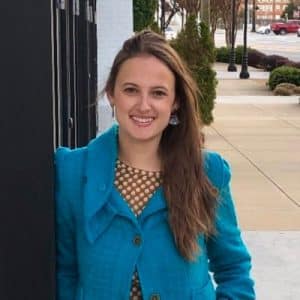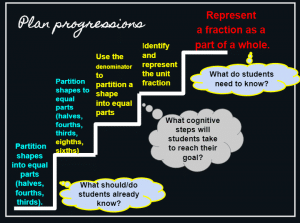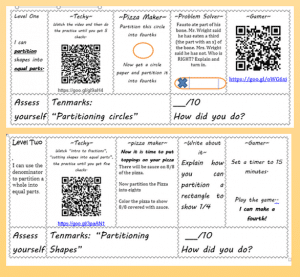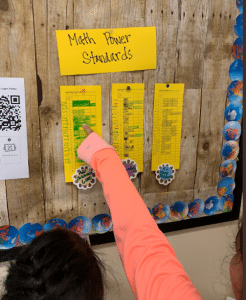Flexible Pacing: Running The Same Race
CompetencyWorks Blog

This post originally appeared at #PersonalizeSC, the South Carolina Department of Education Office of Personalized Learning.
Alyson Wright, a third-grade teacher in Fulton County School District, explores the idea of flexible pacing within a personalized learning environment.
The other day I watched Eliud Kipchoge break the two-hour mark for the marathon. He did this with the support of his pacers, who ran intervals of the race in front of and beside him to make sure he was on track to break the elusive two-hour marathon mark. The ability to break this time barrier depended on the structure of his team of pacers and the course ahead of him. Kipchoge and his team planned and prepared for every step of his record-breaking run. Some question whether this was a true world record due to the support in place and the ideal setting chosen for the run. However, he did something thought impossible until recently, due to maximization of his stamina at the ideal pace.
On a personal level, this brought me back to my first marathon where I went out too strong. I caught up to the pace group that was running a Boston Marathon qualifying time (a goal race for many marathon runners). I realized that if I slowed down a bit and aligned myself with this group that I would qualify for Boston. After keeping pace with the pacers, I knew that I qualified when we crossed the finish line. I never thought I could accomplish this goal, but thanks to the structure of the pacers and the motivated runners who ran alongside me who reminded me at each checkpoint that, if I kept up the pace, I was Boston-bound.
I wouldn’t have qualified for Boston if I had found myself in a slower pace-group, or kept the same pace that I started with, because it was way too fast for me to maintain over 26.2 miles. I would have fallen into a gap where my body would have failed me, and I would have had to either quit or slow down due to exhaustion.
If we enable students to develop at their ideal pace, some will achieve unprecedented heights like Eliud Kipchoge, while others, like me, will attain personal success previously believed impossible.
https://citizentv.co.ke/sports/how-world-class-pacers-ushered-kipchoge-into-history-286101/
A fundamental part of personalized learning is flexible pacing. Pacing is defined as a steady and consistent speed. Traditional pacing occurs when every student is going through a unit at the same speed, even if they have previously shown mastery, or moving them on before showing mastery. Flexible pacing is allowing students to progress at a steady and differentiated pace that is appropriate for them.
With that being said, I have spoken to many teachers who shy away from personalized learning due to the idea of flexible pacing. A common misconception I often hear is that flexible pacing is every student deciding to move on independently, and students are all on different topics. I can see how this would be overwhelming and want to reassure other educators that a lack of structure is not a symptom of flexible pacing.
Instead, flexible pacing should be viewed as a team mentality where the student and teacher are working together (pacer + runner) to determine the appropriate learning schedule (pace) and structure (choice). All students are running the same or similar race, but their checkpoint timeline and strategy will be different. Students who have not mastered a key concept (concepts that are needed for subsequent learning) slow down their learning in order to accomplish mastery in these areas; the purpose of this practice is to prevent gaps in learning that will re-emerge later in the year or in later grades. Students who have already shown mastery move on to higher-order thinking concepts within the same unit of study or, if compatible within the structure of the classroom, move on to the next learning standards.
Flexible pacing should be viewed as a team mentality…all students are running the same race, but their checkpoint timeline and strategy will be different.
Where To Begin With Flexible Pacing?
So what will change when you move from traditional pacing to flexible pacing? Also, how can you align flexible pacing with the mandates of your district, school, or state standards? First, we need to think of accommodation in the context of different processing speeds and prior learning. It is important for teachers to understand how the individuals in the room progress conceptually and apply this to develop student pacing. Below is a recommendation for how you can accommodate for different learning speeds depending on where you are in your practice as a teacher.
Level 1: Every student receives the same lesson; however, students may receive different timelines for assignments. Some students may show mastery within the lesson and can progress onto an extension activity, others may take the entire learning block, while others may need more extended time and structured support. The teacher has planned for each of these differentiated outcomes.
Level 2: Students receive flexible timelines for lessons and assignments. For instance, the teacher may see while teaching a lesson that some students already understand the concept. Instead of keeping them on the carpet, the teacher may send them back to work on an extension activity while she continues to teach the students who are struggling.
Level 3: Students receive different timelines within the unit and/or year in order to master concepts. For instance, the teacher may rely more on small-group instruction because some students still need to master a previous year’s concepts prior to learning the new standard, whereas some students may be ready for higher-order thinking. The teacher still controls the pace of the classroom and tells students when to move on.
Level 4: Students receive different timelines within the unit and/or year in order to master concepts, and they also recognize when they have mastered a skill and are ready to move on. There is a structure in place where students are able to identify where they are in the learning trajectory. Additionally, there are planned formative checkpoints where students and teacher can assess and conceptualize learning. Students know when they have met their learning goal and can identify what is next in their learning progression.
Strategies When Implementing Flexible Pacing
Below are some implementation strategies when considering flexible pacing in the classroom.
Strategy #1: Plan backwards, not forwards. Where do students need to be at the end? Then break down the learning steps in a way that will cohesively bridge student learning. Students will progress through these steps at their own pace. Be ready to adjust based on student needs in the classroom.

Strategy #2: Provide pre-assessments where the learning objectives are stated and clear. Students should be able to see the roadmap ahead of them. The students and the teacher can use the pre-assessment to goal set and make a plan for learning. The teacher can use the pre-assessment to plan small groups for direct instruction. Students should be able to come back to the pre-assessment throughout their learning to assess their progress and reflect.

Strategy #3: Plan for flexible pace by creating clear and concise pathways that mirror the pre-assessment. Students can move at their own pace by determining whether they have met the learning target, or teachers can hold conferences with students to check in on their progress. Having ready-to-go formative assessments in place allows students to have a clear and concise way to check their understanding. Also, know in advance what the students who finish the learning progression early will do. Rather than teaching a whole new standard, maybe start by planning a multi-step enrichment activity or look at connecting standards and ideas in the next grade level. How can you go ahead and bridge that learning?

Strategy #4: Utilize consistent and routine monitoring. Have procedures and structures in place to monitor students and for students to monitor and assess themselves throughout their learning progression. Data integration that keeps track of student progress and proficiency are vital to a successful flexible-pacing model. There are many online tools that teachers can utilize that keep track of student progress. These can also be used for an extra dip into instruction and formative assessment checks, as well as remediation and enrichment. If your school does not have computers or tablets readily available, teachers can make use of data walls or data binders where students can keep track of their learning progress throughout a unit.


The pace at which students learn new concepts differs widely from student to student. Allowing students to move through the curriculum at a differentiated pace does require commitment from the teacher. However, it can be done within the walls of standards, testing, and district mandates with forethought to the learning progressions and attention to how a student is progressing. Enabling flexible pace in the classroom will provide students the opportunity to break barriers they didn’t think they could reach.
Learn More
- Pathways, Pacing, and Agency Are Intertwined
- Policies for Personalization: Levels, Pace, and Progress
- What Is Competency-Based Education? An Updated Definition
About The Author:
Alyson Wright is a third grade teacher for Fulton County Schools at Lake Forest Elementary School. Previously she worked for the Charlotte-Mecklenburg Schools, where she was a Personalized Learning Change Agent.